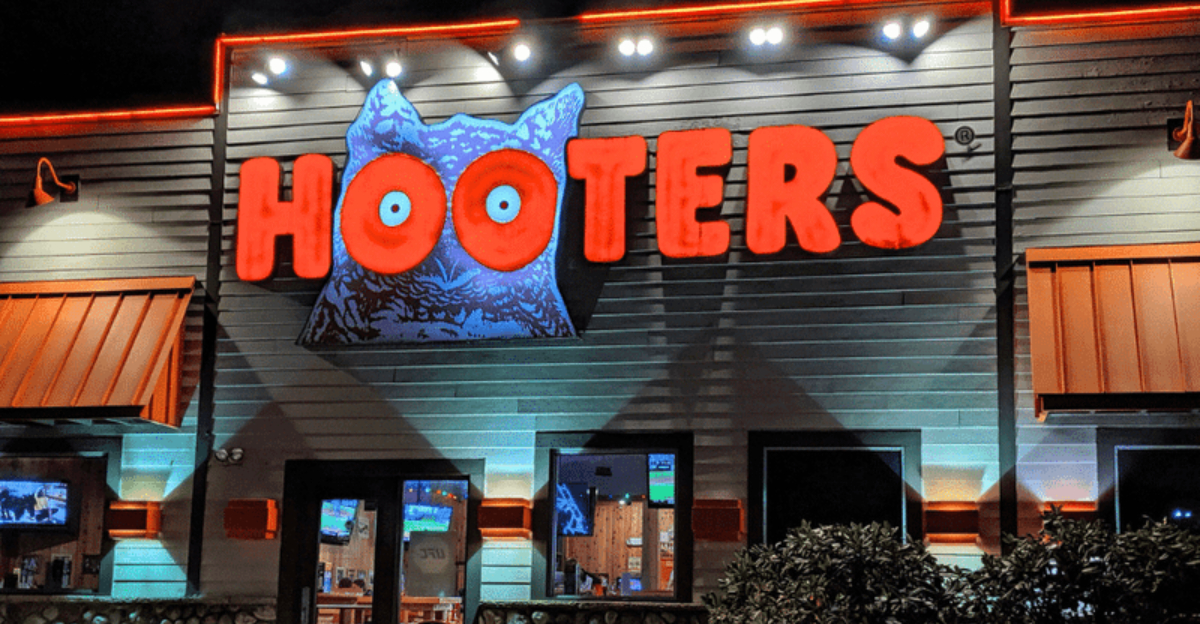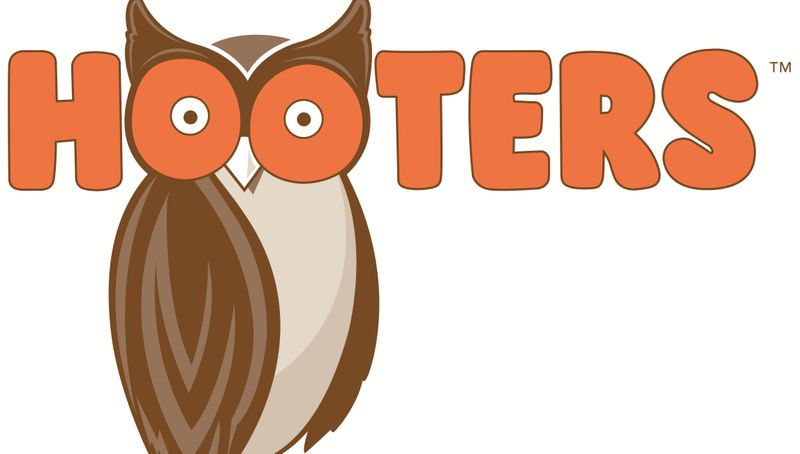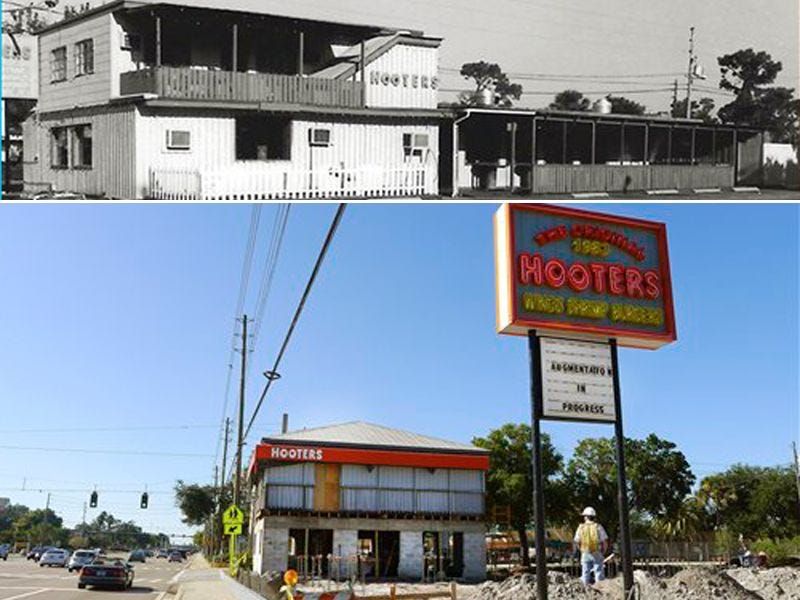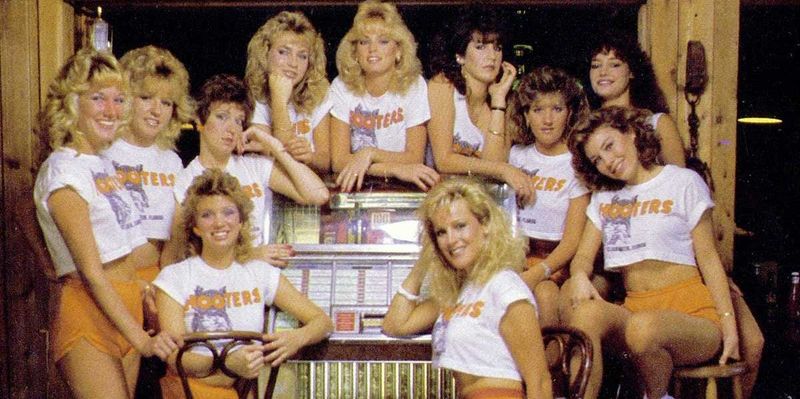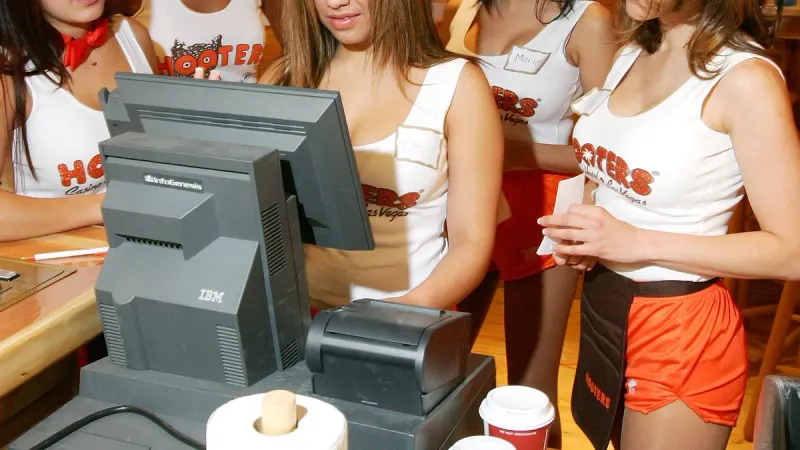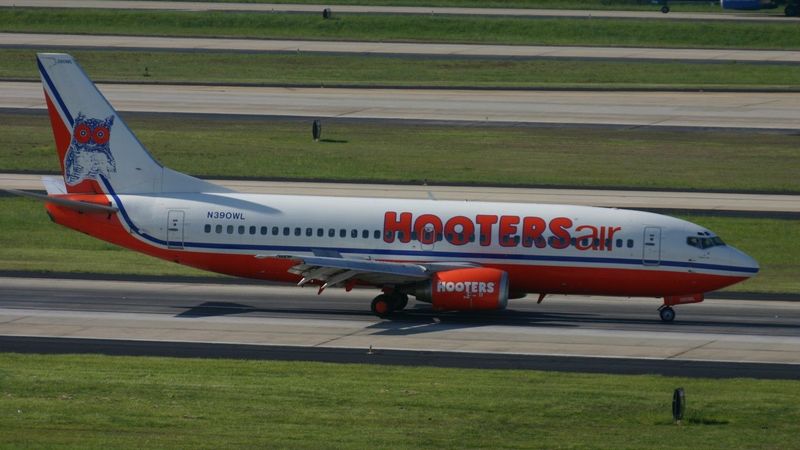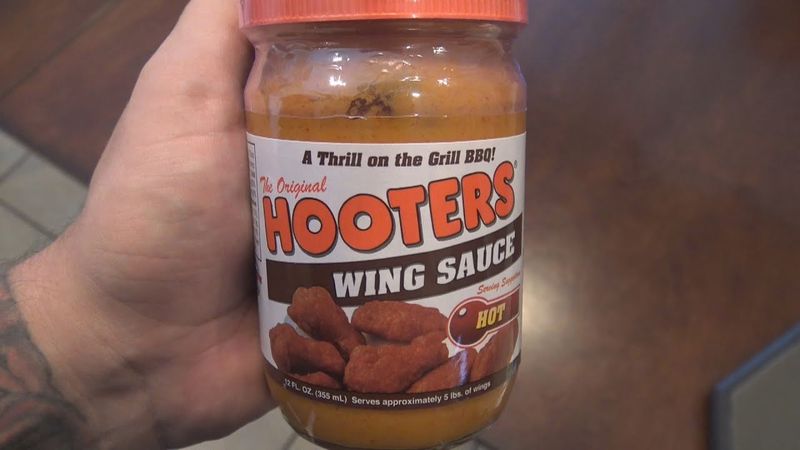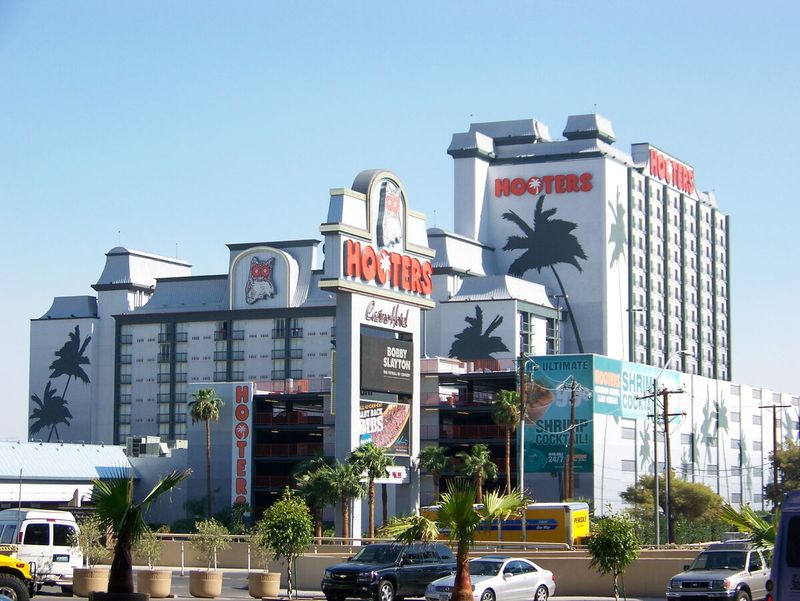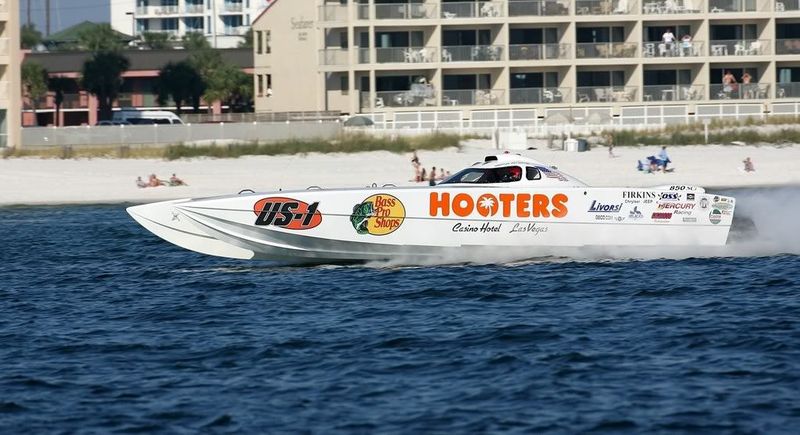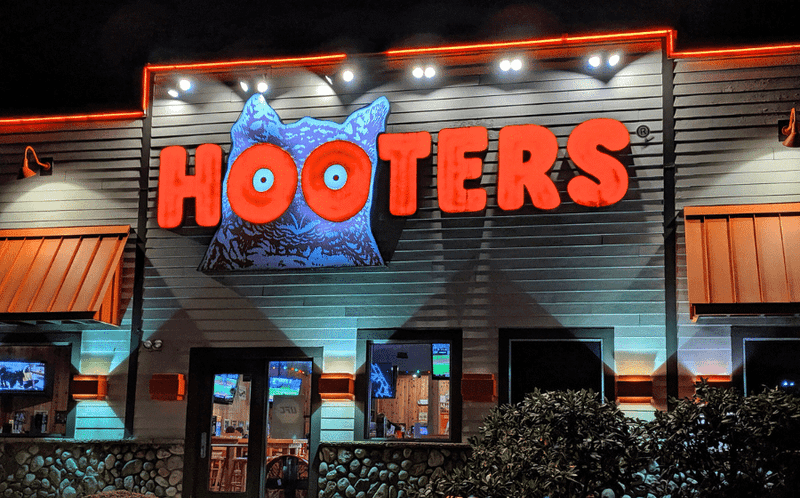Explore the lesser-known aspects of Hooters’ history, a brand that has made a significant impact on American dining culture. From its unique origin story to its ambitious ventures, discover ten intriguing facts about Hooters that you probably didn’t know.
1. It Was Almost Called “Hooters, Inc.” (But Not for the Reason You Think)
Did you know the name “Hooters” was inspired by an actual owl? Co-founder Ed Droste’s childhood nickname was “Hoot Owl,” and the logo was initially an owl wearing glasses. Unlike the popular notion, the name wasn’t just a playful innuendo. This unique twist added a personal touch to the brand’s identity. Hooters, with its distinctive name and logo, quickly became a standout in the restaurant industry, emphasizing a lighthearted and friendly atmosphere. The owl theme subtly nods to wisdom and watchfulness, traits that the brand embraces, even in its whimsical approach.
2. The First Location Was a Failed Tiki Bar
Before Hooters became a household name, it took over a failing tiki bar in Clearwater, Florida, in 1983. The original venue was a Polynesian-themed bar that couldn’t keep its doors open. The new owners retained the bamboo decor, adding their signature dress code, which became iconic over time. This transformation marked the beginning of Hooters’ journey as a quirky and bold dining experience. The playful fusion of tropical elements with American sports bar vibes set the stage for the brand’s future success, proving that sometimes success comes from embracing the unexpected.
3. The Hooters Girls Were Originally Just Waitresses
In the early days of Hooters, waitresses wore whatever they liked, without a defined uniform. The change came later as the “Hooters Girl” image was crafted into a strategic marketing tool, setting the brand apart. The transformation of the waitress role into a signature element of the Hooters experience was both a branding triumph and a cultural shift. This evolution mirrored the brand’s commitment to creating a memorable and distinct dining atmosphere. The iconic uniform became synonymous with Hooters, ensuring the brand’s unique place in the competitive food industry.
4. They Fought (and Won) a Legal Battle Over “Sexual Discrimination”
In 1997, Hooters faced a legal challenge when male employees sued over not being allowed to serve as waiters, citing sexual discrimination. The brand argued that it offered “female entertainment,” a defense that resonated with the courts. This legal victory not only upheld the company’s employment practices but also underscored its unique brand positioning. The case highlighted the complexities of balancing brand identity with legal standards. Hooters emerged with a reinforced image, continuing to champion its distinct model, which combined dining with themed entertainment.
5. Hooters Had Its Own Airline
Between 2003 and 2006, Hooters ventured into aviation with Hooters Air, a budget airline where the famous Hooters Girls served as flight attendants. This bold move included onboard perks like complimentary chicken wings, adding a taste of the brand’s restaurant experience to the skies. Hooters Air was an ambitious extension of the brand, seeking to blend entertainment with travel. Although short-lived, this venture remains a memorable chapter in Hooters’ history. It showcased the brand’s willingness to explore new arenas and keep its audience intrigued and entertained.
6. The Original Wing Sauce Was Stolen from Another Restaurant
The original Hooters wing sauce has its own spicy backstory. Lynn “L.D.” Stewart, one of the co-founders, allegedly took the recipe from a previous workplace, sparking a lawsuit from the original owner. This legal drama unfolded as Hooters was gaining popularity, yet the brand managed to prevail in court. The incident added a layer of intrigue to the brand’s culinary offerings and helped fuel its mystique. Despite the controversy, the wing sauce became a beloved staple, further cementing Hooters’ reputation for bold flavors and bold business moves.
7. There’s a Hooters Casino in Las Vegas
In 2006, Hooters expanded into Las Vegas with the opening of the Hooters Casino Hotel. Formerly the San Remo, this thematic venture featured blackjack, slot machines, and, naturally, a Hooters restaurant on-site. The casino brought the brand’s unique flavor to the entertainment capital of the world, merging dining with gaming thrills. Although the casino hotel has since rebranded, its existence speaks volumes about Hooters’ adventurous spirit. This foray into the casino industry was an attempt to elevate the brand’s profile and reach a broader audience.
8. They Once Had a Pro Fishing Team
During the 1990s and early 2000s, Hooters sponsored a professional fishing team, organizing tournaments and events. The Hooters Pro Fishing Tour showcased angling skills and added an unexpected dimension to the brand’s identity. With Hooters Girls presenting trophies, the tour blended competitive sport with the brand’s signature entertainment style. This venture into the world of professional fishing highlighted Hooters’ versatility and interest in outdoor sports. Although no longer active, the fishing team remains a quirky and memorable footnote in the brand’s diverse history.
9. A Hooters Waitress Won Miss America
Erika Dunlap’s journey from serving wings at a Hooters in Orlando to being crowned Miss America in 2004 is a testament to unexpected paths to success. Her win was proudly celebrated by Hooters, highlighting the diverse backgrounds of its employees. This connection between a national pageant winner and the brand added a touch of prestige and charm to Hooters’ image. Erika’s achievement became a notable part of the brand’s narrative, reflecting the potential and aspirations found within its community. Her story continues to inspire both employees and patrons alike.
10. Hooters Tried to Go Upscale (It Failed)
In 2006, Hooters attempted to enter the upscale dining scene with “Hoots,” a spin-off that featured a more refined atmosphere and no iconic uniforms. However, this venture didn’t resonate with customers who favored the original’s casual vibe. The failure of “Hoots” underscored the importance of authenticity and understanding customer preferences. While the concept was short-lived, it served as a learning experience for the brand. Hooters returned focus to its core strengths, embracing its roots and the elements that made it beloved by fans worldwide.
